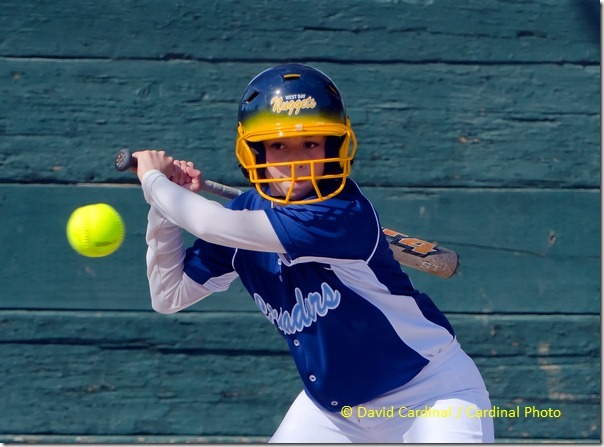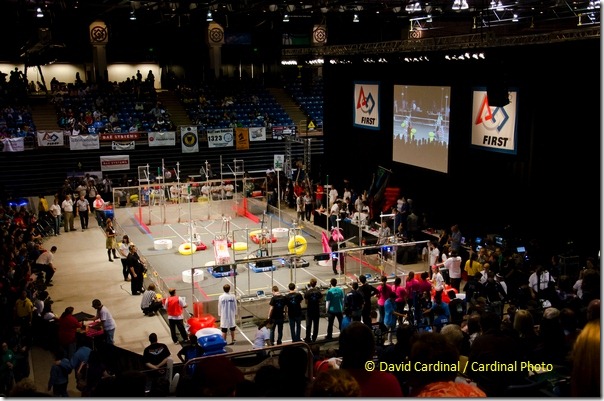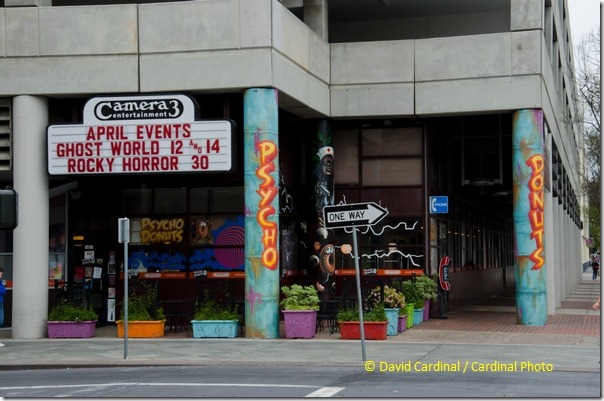- Photo Safaris
- Alaska Bears & Puffins World's best Alaskan Coastal Brown Bear photo experience. Small group size, idyllic location, deluxe lodging, and Puffins!
- Participant Guestbook & Testimonials Candid Feedback from our participants over the years from our photo safaris, tours and workshops. We don't think there is any better way to evaluate a possible trip or workshop than to find out what others thought.
- Custom Photo Tours, Safaris and Personal Instruction Over the years we've found that many of our clients & friends want to participate in one of our trips but the dates we've scheduled just don't work for them or they'd like a customized trip for their family or friends.
- Myanmar (Burma) Photo Tour Myanmar (Burma) Photo Tour December 2017 -- with Angkor Wat option
- Reviews Go hands-on
- Camera Reviews Hands-on with our favorite cameras
- Lens reviews Lenses tested
- Photo Accessories Reviews Reviews of useful Photo and Camera Accessories of interest to our readers
- Useful Tools & Gadgets Handy tools and gadgets we've found useful or essential in our work and want to share with you.
- What's In My Camera Bag The gear David Cardinal shoots with in the field and recommends, including bags and tools, and why
- Articles About photography
- Getting Started Some photography basics
- Travel photography lesson 1: Learning your camera Top skills you should learn before heading off on a trip
- Choosing a Colorspace Picking the right colorspace is essential for a proper workflow. We walk you through your options.
- Understanding Dynamic Range Understanding Dynamic Range
- Landscape Photography Tips from Yosemite Landscape Photography, It's All About Contrast
- Introduction to Shooting Raw Introduction to Raw Files and Raw Conversion by Dave Ryan
- Using Curves by Mike Russell Using Curves
- Copyright Registration Made Easy Copyright Registration Made Easy
- Guide to Image Resizing A Photographers' Guide to Image Resizing
- CCD Cleaning by Moose Peterson CCD Cleaning by Moose Peterson
- Profiling Your Printer Profiling Your Printer
- White Balance by Moose Peterson White Balance -- Are You RGB Savvy by Moose Peterson
- Photo Tips and Techniques Quick tips and pro tricks and techniques to rapidly improve your photography
- News Photo industry and related news and reviews from around the Internet, including from dpreview and CNET
- Getting Started Some photography basics
- Resources On the web
- My Camera Bag--What I Shoot With and Why The photo gear, travel equipment, clothing, bags and accessories that I shoot with and use and why.
- Datacolor Experts Blog Color gurus, including our own David Cardinal
- Amazon Affiliate Purchases made through this link help support our site and cost you absolutely nothing. Give it a try!
- Forums User to user
- Think Tank Photo Bags Intelligently designed photo bags that I love & rely on!
- Rent Lenses & Cameras Borrowlenses does a great job of providing timely services at a great price.
- Travel Insurance With the high cost of trips and possibility of medical issues abroad trip insurance is a must for peace of mind for overseas trips in particular.
- Moose Peterson's Site There isn't much that Moose doesn't know about nature and wildlife photography. You can't learn from anyone better.
- Journeys Unforgettable Africa Journeys Unforgettable -- Awesome African safari organizers. Let them know we sent you!
- Agoda International discounted hotel booking through Agoda
- Cardinal Photo Products on Zazzle A fun selection of great gift products made from a few of our favorite images.
- David Tobie's Gallery Innovative & creative art from the guy who knows more about color than nearly anyone else
- Galleries Our favorite images
Nikon D7000: The One Camera to Have if You’re Only Having One? Or the new Nikon D5100?
Nikon D7000: The One Camera to Have if You’re Only Having One? Or the new Nikon D5100?
Submitted by David Cardinal on Tue, 05/03/2011 - 09:15
 New camera introductions continue to tumble over one another, offering photographers more and more options at decreasing prices. The Nikon D7000 is no exception. With superior image quality and a lower price than the venerable Nikon D300/D300s it is an amazing tool. But it isn’t for everyone. Read on to find out whether it should be your next D-SLR…
New camera introductions continue to tumble over one another, offering photographers more and more options at decreasing prices. The Nikon D7000 is no exception. With superior image quality and a lower price than the venerable Nikon D300/D300s it is an amazing tool. But it isn’t for everyone. Read on to find out whether it should be your next D-SLR…
Before delving into specifics I have to start by saying I really loved shooting with the Nikon D7000. When it was first released I really tried to ignore it as the “consumer” model number placed it fairly low in the Nikon pecking order in my mind. But after several of my safari and workshop clients brought them along as primary or backup cameras and showed me the images they were getting I realized the model number was very mis-leading. The D7000 looked like a camera to be reckoned with so B&H kindly provided me with a unit to review.
And I was blown away. Shooting both indoors and outdoors the images were an upgrade over the ones taken with my D300S. Outdoors the differences were very subtle and nothing I’d switch cameras to get but indoors (or in low light) the D7000 let me go another stop up in ISO without increased noise. It didn’t compare with my D700 for image quality, but then again it is less than half the cost.
I also simply loved the feel of the camera. It is slightly more compact and lighter than the D300s or D700 (and of course dramatically smaller than the full size bodies of the D3 series) and fit great in my hand. It was the camera I grabbed first when I had to go out and do a quick shoot. The video controls were also very welcome. Shooting video was dramatically easier than with my D300S.
Image Quality
The Nikon D7000 gets an A+ in image quality for a small sensor (DX format) camera. First for the spec hounds it offers the highest resolution in Nikon’s DX format camera line at 16.2MP (like the D5100) and a solid upgrade from the D90 which it supercedes (although because of the D90’s lower cost Nikon plans to leave it in the lineup).
DxOMark results place the Nikon D7000 squarely above Nikon’s previous small sensor champ the Nikon D300/D300S in low light sensitivity and color rendition. However it is still below the D3/D700 family and of course even further behind the D3S/D3X—all the full-frame flagships. But the full frame cameras cost more than twice as much and require a whole separate set of more expensive lenses. So for the relatively modest $1200 price tag the D7000 offers the best dollar for dollar image value in the Nikon Pro & Prosumer product lines.
Features and Functions
The Nikon D7000 is plenty speedy for a mid-range camera at 6 fps (faster than the 4.5 fps of the D90 but slower than the 7.1 fps of the D300S) and improves dramatically on the low-light (high ISO) performance of the D90 (even surpassing the performance of the more expensive D300S). There is also a new high performance Autofocus module (Multi-CAM 4800DX) with 39 AF sensors that worked very well when I used it both indoors and outdoors. This model also adds the 100% viewfinder coverage from the D300/S family.
The D7000 also picks up the Magnesium Alloy body construction of the D300/S, an upgrade from the Polycarbonate of the D90. It didn’t “feel” quite as hefty or rugged as my D300S or D700 but it definitely was solid, well balanced and a pleasure to shoot with. It is also slightly smaller and 20% lighter than the D300/S although a little heavier than the D90.
“Consumer” Shooting Modes
Like the D90 (and unlike Nikon’s Pro camera lines) the D7000 offers a variety of pre-packaged shooting modes such as Close Up, Night Portrait, Pet Portrait, etc. Whether these are of any use to you will of course depend on your shooting style but they are certainly a great way to get started photographing in unfamiliar situations.
Full 1080p HD Video
The D7000 brings full 1080p HD video to the Nikon mid-range and also updates the movie encoding to H.264/MPEG4 from the previous AVI format. Just as importantly Nikon has finally addressed the needs of video shooters by moving the controls around on the back of the camera to provide a dedicated Record button and continuous Autofocus. The D7000 makes shooting video dramatically easier than trying to use either the D90 or the D300S.
Should You Buy One?
There are a couple possibly major drawbacks to the D7000 for anyone who already owns current model Nikon pro or prosumer D-SLRs. First, many of the controls have been rearranged. Mode is on the large shooting mode dial instead of where it can be switched easily using the command dial. And the Auto-focus control has been changed around. The new system may grow on you but if you have one camera with the older controls and one with the newer controls then you’ll have a little adjusting to do as you switch back and forth. The FUNC button is also gone, so you need to learn to use the Preview button for any of your quick functions. I rely on the FUNC button to kill the flash and to set bracketing quickly so I really missed it.
Additionally the control rearrangement on the back of the camera has moved the joystick a little bit. If you are left-eyed shooter like me you may find this puts your thumb in your face if you try to move the AF sensor while you are looking through the viewfinder. I could work around this by keeping my eye a little further from the camera but of course that really reduces stability. I’m sure I’d get used to it over time but it was definitely disconcerting.
The D7000 also does not have Nikon’s standard 10-pin accessory connector. Instead it uses the same connector as the D90. It does have a stereo microphone input, virtual horizon and Intervalometer like the D300/D300S.
From a logistics perspective the D7000 uses a new vertical grip design and a new battery. That means you’ll need to carry additional chargers, batteries, and a grip if you want to use it as a full backup to a current camera. Personally I’m wondering whether the new grip connector will be the way of the future and will be used on the upcoming Nikon D700 replacement. If so then it’s just a matter of time before I’ll own one in any case but I’m still not excited about needing two sets until that happens. The Nikon D7000 also has only SD slots, so you’ll be forced to cough up for some high speed SD cards to complement your CompactFlash library. Again this may be the way of the future but the D300s at least offers both types of slots which makes the transition easier.
Will I Be Buying One?
If I was only going to own one Nikon D-SLR and I didn’t want to spend the several thousand dollars for a full frame (FX format) model the Nikon D7000 would be a no-brainer for me. As it is my D700 provides me with awesome image quality and low light shooting with my D300S serving as a compatible backup and DX format alternative for when I have the light and want the extra reach (for bird photography for example). Currently I don’t use my D-SLR for video enough to switch just to get the better video controls—especially when they make the camera handle differently than my other Nikons.
So whether or not I buy one will likely be determined by the battery and vertical grip on the D700 replacement (which is much rumored and waited for but not likely to happen as soon as we’d all hoped). If Nikon moves to the D7000 battery and grip then I’ll be delighted to trade my D300S in for a D7000. If not then the simplicity of keeping one set of accessories is of great value to me.
What About the New Nikon D5100?
 In some very exciting news B&H now has the brand new Nikon D5100 (you can read our original announcement of it online) in stock. This less expensive and slightly smaller model features the same amazing sensor as the Nikon D7000 yielding the same gorgeous images in high and low light levels, but without the rugged build, speed and some of the fancier features. So if you have simple shooting needs but don’t want to compromise on quality you can now get the Nikon D5100 with 18-55mm lens for $899 from B&H.
In some very exciting news B&H now has the brand new Nikon D5100 (you can read our original announcement of it online) in stock. This less expensive and slightly smaller model features the same amazing sensor as the Nikon D7000 yielding the same gorgeous images in high and low light levels, but without the rugged build, speed and some of the fancier features. So if you have simple shooting needs but don’t want to compromise on quality you can now get the Nikon D5100 with 18-55mm lens for $899 from B&H.
Take your new Camera Out for a Spin!
Whether you’ve just bought a new camera or are about to, don’t be intimidated by it. One of the best ways to learn how to use it effectively while having a great time is to join us on one of our photo tours and safaris where we cater to small groups in incredible locations. Our Alaska and Texas trips in particular allow for relatively quick but still spectacular one-week adventures. For longer trips Southeast Asia or Africa offer the photo experiences of a lifetime. All our trips make great graduation presents to go with that new camera! You can learn more or sign up for any of our trips on our Cardinal Photo Photo Events page. We also do a limited number of individual or small group customized instruction sessions in case you’ve already got a trip planned and want to make the most of it. Email us at safaris [at] cardinalphoto.com if you’re interested.
Feature Comparison Resource:
Imaging Resource published a nice comparison table of the features and specs of the Nikon D7000, Nikon D90 and Nikon D300S.
- Log in to post comments





